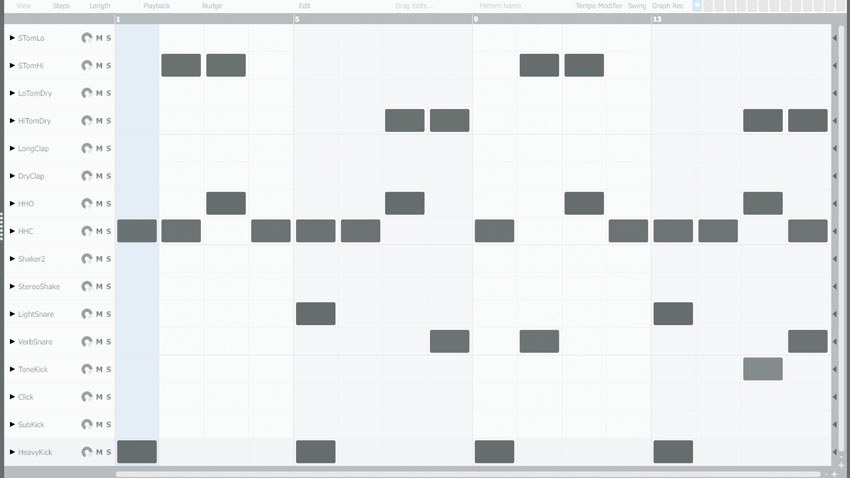How to program 6 different four-to-the-floor grooves
Every sub-genre of house and techno adheres to its own set of drum programming rules. Here’s a guide to six of them…
There can be much more to a four-to-the-floor drum track than just that on-beat kick drum, off-beat hats and backbeat snare. Each of the many flavours of house and techno presents its own percussive subtleties and nuances, and if you want your choons to sound on-point, you need to get those identifiers right.
Here, we'll show you what it is that makes the grooves of six four-to-the-floor sub-styles work in the particular ways they do. For more on programming electronic drum parts, get the June edition of Future Music.

Step 1: A solid house beat is fairly basic: a bass drum on every beat of the bar, a clap on beats 2 and 4, and an open-hi-hat on the off-beat between each kick. Stick mainly to an electronic palette - drum machine TR-808 and TR-909 sounds are the norm.

Step 2: Jackin’, NY-style house retains this minimalist style of programming, but ghost-snare hits are sparsely dropped on even 16th-notes. Displacing these later will disrupt the solid kick-clap-hat foundation to emphasise the swung groove for the dancefloor.

Step 3: Funkier house styles are slower (around 120bpm), with even more swing. To emphasise this, sprinkle the kick-clap-hat core with plenty more ghost snares, closed hats and percussion across even 16th-notes, and push them even further off the grid.

Step 4: Pumping tech-house incorporates the previous techniques, but emphasises solidity via the signature use of punchy 909 drums - especially 16th-note snare roll builds, which are used to ramp up the intensity at the end of eight- or 16-bar sections.

Step 5: To generalise, techno ranges from groovier, slower styles at house tempos, right up to breakneck speeds of 135bpm or more. It’s all about the drums here: speedy bongo patterns, churning hi-hats and call-and-answer perc interplay to give supreme percussive emphasis.
Want all the hottest music and gear news, reviews, deals, features and more, direct to your inbox? Sign up here.

Step 6: UK bassline house follows a lot of the rules discussed here, but beats are usually fairly sparse and timbrally thin, to allow the track’s groove to come from the wobbling, dubstep-esque modulated bass synths running underneath.
Future Music is the number one magazine for today's producers. Packed with technique and technology we'll help you make great new music. All-access artist interviews, in-depth gear reviews, essential production tutorials and much more. Every marvellous monthly edition features reliable reviews of the latest and greatest hardware and software technology and techniques, unparalleled advice, in-depth interviews, sensational free samples and so much more to improve the experience and outcome of your music-making.
